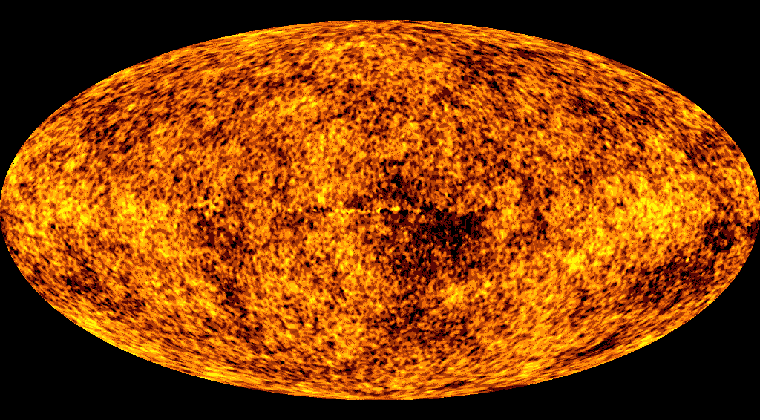
If we look far enough across the universe, we can detect the light that has been travelling since the beginning of the universe nearly 14 billion years ago. This allows us to see the faint glow of the Big Bang all around us. Although this radiation can not be seen with the human eye, it can easily be detected with radio telescopes. This all-sky map was produced with data from the WMAP cosmology probe; it shows the glow of the Big Bang when the universe was only 380 000 years old and the universe had a temperature of 3000°C.
This is the one of the major reasons why astronomers know that the universe was formed 14 billion years ago in a hot, dense, event known as the Big Bang - because we are surrounded by the faint glow of the Big Bang, and it looks like this:

The temperature variations in this map explain why the galaxies in the universe cluster together into superclusters. The matter in the Big Bang was clumpy. These clumps correspond to the coolest (darkest) spots on this map, and it was in these clumps that galaxies were most likely to form. The hottest (brightest) spots were low-density regions which eventually, after billions of years, became huge voids.